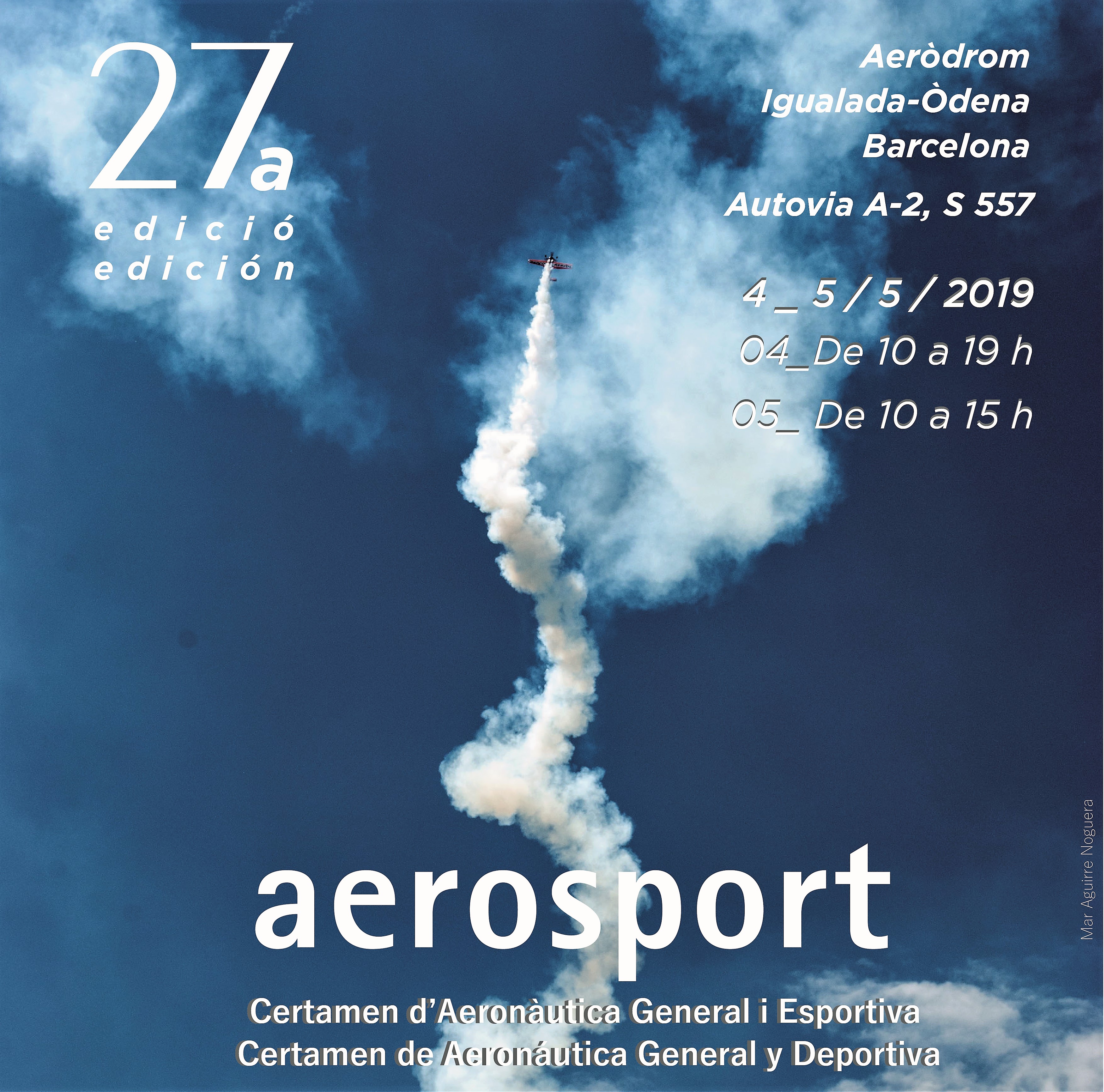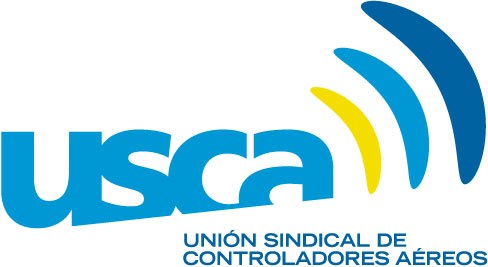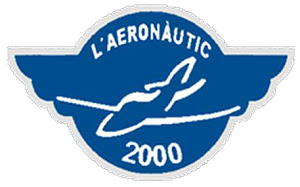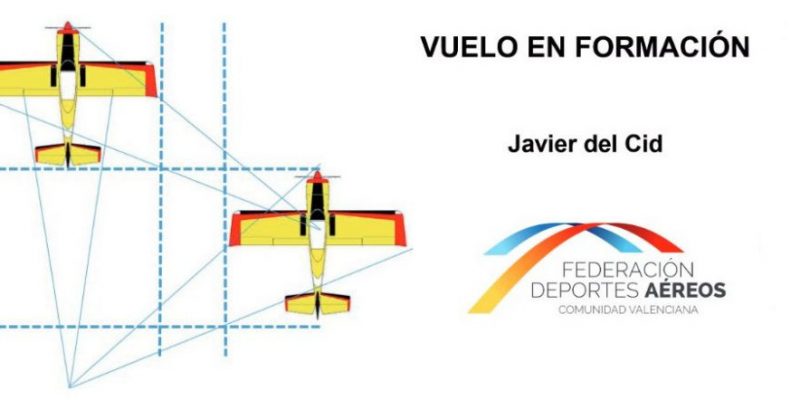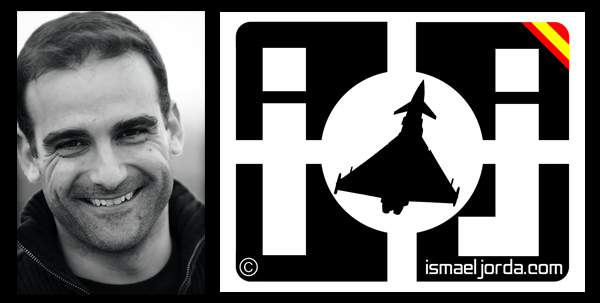jueves, 25 de abril de 2019
Phoenix, a blimp-aircraft hybrid, has first test flight
https://edition.cnn.com/travel/amp/phoenix-aircraft-test-flight-scli-gbr-intl/index.html
https://youtu.be/nHIOvld_I_g
press release:
A group of UK experts has successfully flown the first ever large-scale aircraft powered by variable-buoyancy propulsion. The Phoenix is designed to repeatedly transition from being lighter than air to being heavier than air so thrust is generated to propel the craft forward.
Variable-buoyancy propulsion is used in underwater remotely operated vehicles, but has never before been harnessed for large aircraft. The system means the uninhabited vehicle is self-sufficient in energy so could, in theory, be operational for an unlimited period of time, an innovation which could revolutionise the telecommunications industry.
The team behind the ultra-long endurance autonomous aircraft includes representatives from academia and industry. Andrew Rae, Professor of Engineering at the University of the Highlands and Islands Perth College UHI Campus, led the design of the aeroplane.
He explains: “The Phoenix spends half its time as a heavier-than-air aeroplane, the other as a lighter-than-air balloon. The repeated transition between these states provides the sole source of propulsion.
“The vehicle’s fuselage contains helium to allow it to ascend and also contains an air bag which inhales and compresses air to enable the craft to descend. This motion propels the aeroplane forwards and is assisted by the release of the compressed air through a rear vent.
“This system allows the Phoenix to be completely self-sufficient. The energy needed to power its pumps and valves is provided by a battery which is charged by lightweight flexible solar cells on its wings and tail.
“Vehicles based on this technology could be used as pseudo satellites and would provide a much cheaper option for telecommunication activities. Current equivalent aeroplanes are very complex and very expensive. By contrast, Phoenix is almost expendable and so provides a user with previously unavailable options.”
The prototype aeroplane, which is 15 metres long and has a wingspan of 10.5 metres, was flown successfully and repeatedly over a distance of 120 metres during indoor trials at the Drystack facility in Portsmouth in March. The test flight was the culmination of a three-year project to prove the viability of a variable-buoyancy powered aircraft.
The Phoenix team are now exploring collaborations with major manufacturers to take the technology to the next phase of development. The project has been part-funded by Innovate-UK, the UK’s Innovation Agency, through the Aerospace Technology Institute.
The University of the Highlands and Islands offers a range of aircraft engineering programmes and pursues research activities across the aerospace sector and in motorsport. The Perth College UHI Dunne Aeronautical Laboratory gives students access to state-of-the-art learning and research facilities in aerodynamics, propulsion and flight. These include a large flight simulator, gas-turbine rig and wind tunnels.
more info
https://phoenixuas.co.uk/
[video] A New Gargantuan Drone Is Ready To Beam Internet From the Sky
Apr. 25, 2019 Release
SoftBank Corp.
SoftBank Corp. Develops Aircraft That Delivers Telecommunications Connectivity from the Stratosphere New business to be launched through HAPSMobile Inc.
SoftBank Corp. (“SoftBank”) today announced the launch of a High Altitude Platform Station (HAPS) business through HAPSMobile Inc. (“HAPSMobile”), a joint venture between SoftBank and US-based company AeroVironment, Inc. With the aim of constructing a HAPS system that delivers telecommunications network connectivity from the sky for a global business, HAPSMobile developed “HAWK30,” an unmanned aircraft for stratospheric telecommunications platform system that flies at altitudes of approximately 20 kilometers.
HAPS refers to systems where unmanned objects such as aircraft flying in the stratosphere can be operated like telecommunication base stations to deliver connectivity across wide areas. By utilizing HAPS, SoftBank will be able to build stable Internet connection environments at locations unserved by telecommunication networks, such as mountainous terrain, remote islands and developing countries. Furthermore, by efficiently interconnecting with current telecommunication networks, SoftBank will be able to realize wide-area connectivity that spans both the sky and the ground to enable drone utilization, as well as contribute to the adoption of IoT and 5G. Since HAPS can provide stable telecommunications networks without being affected by situations on the ground, the technology is also expected to help assist rescue and recovery efforts during times of disasters.
More info:
https://www.hapsmobile.com/en/
Alphabet’s Loon and SoftBank’s HAPSMobile Form Strategic Relationship to Advance High Altitude Network Connectivity
- Apr. 25, 2019
Release
SoftBank Corp.
Alphabet's Loon and SoftBank's HAPSMobile form strategic relationship to advance high altitude network connectivity HAPSMobile to Invest $125 Million in Loon
SoftBank Corp.'s HAPSMobile and Alphabet's Loon have formed a long-term strategic relationship to advance the use of high altitude vehicles, such as balloons and unmanned aircraft systems (UAS), to bring connectivity to more people, places, and things worldwide. As part of the new relationship and HAPSMobile's financial and investment strategy, HAPSMobile has made a decision to invest $125 million USD in Loon. Loon has obtained the right to invest the same amount in HAPSMobile in the future. Furthermore, to strengthen the relationship, the companies are actively exploring commercial collaborations to accelerate the deployment of high altitude network connectivity solutions, with a focus on expanding mobile internet penetration, enabling internet of things (IoT) applications, and assisting in the deployment of 5G.Specifically, the companies have entered into formal negotiations on a number of areas of potential technical and commercial collaboration, including:- A wholesale business that would allow HAPSMobile to utilize Loon's fully-functioning vehicle and technology. Likewise, Loon would be able to utilize HAPSMobile's aircraft, which is currently in development, upon its completion.
- A jointly developed communications payload that is adaptable to multiple flight vehicles and various ITU compliant frequency bands.
- A common gateway or ground station that could be deployed globally and utilized by both Loon and HAPSMobile to provide connectivity over their respective platforms.
- Adapting and optimizing Loon's fleet management system and temporospatial SDN for use by HAPSMobile.
- Creating an alliance to promote the use of high altitude communications solution with regulators and officials worldwide.
- Enabling flight vehicles from each party to connect and share the same network connectivity in the air.
With the deployment of such technology, people will be reachable in areas where connectivity is lacking; such as mountainous terrain, remote islands, and developing countries.
Each company brings important and complementary strengths to the table. HAPSMobile, SoftBank's subsidiary, is a joint venture with AeroVironment, Inc. HAPSMobile has completed its development of HAWK 30, its aircraft-type stratospheric telecommunications platform. SoftBank is one of Japan's telecommunication carriers and has significant experience in network planning, operations, and bringing connectivity solutions to the market.
Loon brings technical leadership through an existing, fully-functioning high altitude vehicle and communications system that has already flown over 30 million kilometers and connected hundreds of thousands of users worldwide. In addition, Loon has nearly a decade of experience developing, launching, flying, and managing a high altitude platform.
High altitude network connectivity platforms operate in the stratosphere, which is above ground infrastructure, but below satellites, allowing fornear ubiquitous coverage that avoids ground clutter and significant latency issues. These advantages make such vehicles a promising solution for expanding mobile coverage to those who need it as well as IoT and 5G use-cases. HAPSMobile and Loon, cooperating with strengths and technology from each party, seek to provide next generation global connectivity and revolutionize the world's mobile networks.
Junichi Miyakawa, Representative Director & CTO of SoftBank Corp., also President & CEO of HAPSMobile Inc. said, “Building a telecommunications network in the stratosphere, which has not been utilized by humankind so far, is uncharted territory and a major challenge for SoftBank. Working with Alphabet's subsidiary Loon, I'm confident we can accelerate the path toward the realization of utilizing the stratosphere for global networks by pooling our technologies, insights and experience. Even in this current era of coming 5G services, we cannot ignore the reality that roughly half of the world's population is without Internet access. Through HAPS, we aim to eliminate the digital divide and provide people around the world with the innovative network services that they need.”
Loon CEO Alastair Westgarth said, “We see joining forces as an opportunity to develop an entire industry, one which holds the promise to bring connectivity to parts of the world no one thought possible. This is the beginning of a long-term relationship based on a shared vision for expanding connectivity to those who need it. We look forward to what the future holds.”
Astro Teller, Captain of Moonshots at X said, “From the very beginning, Loon's mission has been to connect the unconnected. While at X the team made incredible technical progress. We're delighted to now be cheering them on as they collaborate with SoftBank's HAPSMobile to bring the benefits of connectivity to more people around the world.”
miércoles, 24 de abril de 2019
What SpaceX's latest failure means for the rest of American spaceflight
http://flip.it/fUdo3B
Controlling instabilities gives closer look at chemistry from hypersonic vehicles [feedly]
http://www.spacedaily.com/reports/Controlling_instabilities_gives_closer_look_at_chemistry_from_hypersonic_vehicles_999.html
-- via my feedly newsfeed
Drop test proves technologies for Spanish reusable microlauncher [feedly]
http://www.spacedaily.com/reports/Drop_test_proves_technologies_for_reusable_microlauncher_999.html
-- via my feedly newsfeed
Sky Power unveils new combustion engines for drones [feedly]
http://uasmagazine.com/articles/2019/sky-power-unveils-new-combustion-engines-for-drones
-- via my feedly newsfeed
Will Dash 8 hybrid-electric X-plane hit the spot for green aviation? [feedly]
https://runwaygirlnetwork.com/2019/04/23/will-dash-8-hybrid-electric-x-plane-hit-the-spot-for-green-aviation/
-- via my feedly newsfeed
Zipline launches the worlds largest medical drone delivery network in Ghana
Air Force Seeks 10-20% Maintenance Savings From Innovation

-- via my feedly newsfeed
Cabin Inspection Software Adding Functionality for New Components and Aircraft Types [feedly]
https://www.mro-network.com/maintenance-repair-overhaul/cabin-inspection-software-adding-functionality-new-components-and
-- via my feedly newsfeed
Van Horn Assures Blades Safe Following Fatal Crash
https://www.ainonline.com/aviation-news/general-aviation/2019-04-22/van-horn-assures-blades-safe-following-fatal-crash
What Elon said: Tesla CEO goes big on promises at Autonomy Day event
https://newatlas.com/tesla-autonomy-day-elon-musk-quotes/59413/
Restored Northrop N-9M Reported Down, Destroyed, in CA Accident [feedly]
http://www.aero-news.net/index.cfm?do=main.textpost&id=980a936b-f361-4ea4-9f34-21a17783c18a
-- via my feedly newsfeed
New matchbox-sized radar in its way into impaired people, or unmanned moving devices to detect objects in real time.
Radar provides detailed information about the size, distance and speed of moving objects. However, for close-range applications, the transmitted radio waves must have short wavelengths to pick up as much detail as possible about its immediate environment. Such sensors could help visually impaired people, and unmanned moving devices, to see by translating radar reflections into useful information.
“Current radar modules are large and bulky. They also lose out on key details because they operate using long radio wavelengths,” says Seifallah Jardak , who worked on the project under the supervision of Sajid Ahmed and Mohamed-Slim Alouini from KAUST and along with Tero Kiuru and Mikko Metso from VTT. “We wanted to develop a low-power, portable radar. Colleagues at VTT brought the necessary experience in millimeter-wave and hardware design, while I focused on the signal processing side and developed modular radar software,” explains Jardak.
Continue reading https://discovery.kaust.edu.sa/en/article/791/tiny,-fast,-accurate-technology-on-the-radar
Paper: https://repository.kaust.edu.sa/handle/10754/631876
video: https://player.vimeo.com/video/307220053
Lockheed Martin Inaugurates F-16 Production Line in Greenville, South Carolina
press release
GREENVILLE, S.C., April 23, 2019 /PRNewswire/ -- Lockheed Martin (NYSE: LMT) hosted a ceremony to celebrate its new F-16 production line in Greenville, South Carolina. F-16 tooling and equipment previously in Fort Worth, Texas, has since been installed in a newly-refurbished hangar in Greenville, where the company will begin manufacturing F-16 Block 70 aircraft later this year.
"This is an exciting time as we celebrate another important milestone for the F-16 ‒ the world's most successful, combat-proven 4th generation fighter," said Michele Evans, executive vice president of Lockheed Martin Aeronautics. "The future is bright, and it begins right here in Greenville, South Carolina ‒ the new home of F-16 production."
Lockheed Martin F-16 Block 70
Demand continues to soar for new production F-16s and F-16V upgrades. Bahrain became the first F-16 Block 70 customer in June 2018, Slovakia signed Letter of Agreement in Dec. 2018 for 14 Block 70 aircraft, and Bulgaria and the U.S. Government are currently negotiating Bulgaria's planned acquisition of new F-16 Block 70 aircraft. The U.S. State Department also recently approved the proposed sale of 25 new production F-16 Block 72 aircraft and F-16V upgrades for Morocco.
"This is a great day for Greenville and South Carolina," said U.S. Sen. Lindsey Graham of South Carolina. "We have the best workforce in the country and now we are going to build the most advanced F-16 ever right here in the Palmetto State."
"South Carolina's workforce is second to none, and the fact that Lockheed Martin continues to invest and put its faith in South Carolinians to build the newest F-16s in Greenville speaks volumes about our state and the company," said South Carolina Governor Henry McMaster. "Every person who calls South Carolina home should be proud that the F-16 is made right here in the Palmetto state."
More than 400 new jobs will be created to support the F-16 production line in Greenville. F-16 production also supports hundreds of U.S.-based Lockheed Martin engineering, procurement, sustainment and customer support jobs and thousands of U.S. supplier jobs. A significant portion of F-16 production occurs in the supply chain, which currently includes more than 400 U.S. suppliers in 41 states.
To date, 4,588 F-16s have been produced, and there are approximately 3,000 operational F-16s are in service today in 25 countries.
For additional information, visit: lockheedmartin.com/f16
About Lockheed Martin
Headquartered in Bethesda, Maryland, Lockheed Martin is a global security and aerospace company that employs approximately 105,000 people worldwide and is principally engaged in the research, design, development, manufacture, integration and sustainment of advanced technology systems, products and services.
SOURCE Lockheed Martin Aeronautics Company
Airbus and ZF to develop highly precise end-to-end autonomous driving solution
press release
Airbus Defence and Space and ZF Friedrichshafen AG, a system provider for mobility, are collaborating to enrich and complement ZF on-board system to enhance autonomous driving by using Airbus satellite derived information.
Under this collaboration, Airbus and ZF are combining their capabilities and expertise to offer a reliable end-to-end solution for self-driving and self-positioning vehicles. To answer the extreme level of accuracy required, Airbus provides its unique high precise Ground Control Points (GCPs), calculated using radar satellite imagery, to support the fusion of ZF sensor data such as Lidar and Radar. In addition, the GCPs serve as independent data source to improve and validate the accuracy of mobile mapping data.
Furthermore Airbus investigates generation of High Definition maps (HD maps) based on aerial and space borne approach, to complement ZF semantic cards. HD Maps are key to ensure the guiding route, as they build an important link between mobile mapping data and global positioning systems. They contain more information than just the road itself, as lanes, the radius of curves, lane widths, street signs, bridges, and buildings, as well as their distance from one another. Both remote sensed information GCPs and HD maps will be integrated as foundation layers into the “ZF AD Environment” – an enhanced HD maps solution ZF will present soon – where all needed information for autonomous driving will be implemented in a cloud based system.
Autonomous driving is a new, enthusing and challenging market for Airbus, as the highest level of autonomy requires the highest maps precision.
* * *
About Airbus
Airbus is a global leader in aeronautics, space and related services. In 2018 it generated revenues of € 64 billion and employed a workforce of around 134,000. Airbus offers the most comprehensive range of passenger airliners. Airbus is also a European leader providing tanker, combat, transport and mission aircraft, as well as one of the world’s leading space companies. In helicopters, Airbus provides the most efficient civil and military rotorcraft solutions worldwide.
About ZF Friedrichshafen AG
ZF is a global technology company and supplies systems for passenger cars, commercial vehicles and industrial technology, enabling the next generation of mobility. With its comprehensive technology portfolio, the company offers integrated solutions for established vehicle manufacturers, mobility providers and start-up companies in the fields of transportation and mobility. ZF continually enhances its systems in the areas of digital connectivity and automation in order to allow vehicles to see, think and act. In 2018, ZF achieved sales of €36.9 billion. The company has a global workforce of 149,000 with approximately 230 locations in 40 countries.
martes, 23 de abril de 2019
Russia develops super heavy 500-ton Elephant transport aircraft - YouTube
Raytheon's new DeepStrike missile rocket motor passes critical test
pr
ROCKET CENTER, W.Va., April 23, 2019 /PRNewswire/ -- Raytheon Company (NYSE: RTN) completed a successful static test of the new DeepStrike® missile rocket motor, which moved the advanced, surface-to-surface weapon closer to its maiden flight test later this year.
The company is offering the DeepStrike missile for the U.S. Army's Precision Strike Missile, or PrSM, program to replace the aging Army Tactical Missile System that is approaching the end of its service life.
"Testing shows us how initial data assessments line up and validates them for the next phase in development," said Dr. Thomas Bussing, Raytheon Advanced Missile Systems vice president. "This test confirms our design for the DeepStrike propulsion system is solid and moves us one step closer to extending the Army's reach and doubling the load-out of long-range fires."
The rocket motor test at Allegany Ballistics Laboratory in West Virginia is the latest in a series of milestones for the DeepStrike missile. Raytheon recently concluded a successful preliminary design review for the weapon.
Raytheon's new, long-range precision strike missile features an innovative, two-in-the-pod design and will fly farther, faster, and give the Army twice the firepower at half the cost per missile. It is also more maneuverable and has a modular, open architecture to simplify system upgrades.
"With our expertise in advanced weapon systems, Raytheon is best positioned to provide an affordable, low-risk solution that gives the Army an overwhelming advantage over our nation's adversaries," Bussing said.
The DeepStrike missile will defeat fixed land targets 60-499 kilometers away, and get there faster than current systems.
About Raytheon
Raytheon Company, with 2018 sales of $27 billion and 67,000 employees, is a technology and innovation leader specializing in defense, civil government and cybersecurity solutions. With a history of innovation spanning 97 years, Raytheon provides state-of-the-art electronics, mission systems integration, C5I™ products and services, sensing, effects and mission support for customers in more than 80 countries. Raytheon is headquartered in Waltham, Massachusetts. Follow us on Twitter.
Embraer Praetor 600 Business Jet Outperforms on Certification
04/18/2019
Embraer Praetor 600 Business Jet Outperforms on Certification São Paulo, Brazil, April 18, 2019 – Embraer announces that the company’s new Praetor 600 super-midsize business jet was granted its Type Certificate by Brazil’s Civil Aviation Authority (ANAC—Agência Nacional de Aviação Civil), having been announced in October 2018 at NBAA-BACE and becoming the only super-midsize business jet to be certified since 2014. The Praetor 600 is the best performing super-midsize jet ever developed, surpassing all its main design goals and becoming capable of flying beyond 4,000 nautical miles in long-range cruise speed or beyond 3,700 nautical miles at Mach .80 from runways shorter than 4,500ft, complemented by an outstanding payload capability. “Our engineering and program teams have outperformed again by passionately designing, developing and certifying the class-leading Praetor 600 business jet, exceeding specifications and expectations, and ahead of schedule,” said Paulo César Souza e Silva, Embraer CEO. “This advanced aircraft reflects not only our journey of innovation, it is also a preview of the future of this great company.” “The most disruptive and technologically advanced super-midsize business jet has arrived. The Praetor 600 will fascinate our customers with the highest performance, technology and comfort in its class and raise the customer experience to an unprecedented level,” said Michael Amalfitano, President & CEO, Embraer Executive Jets. “I want to thank and congratulate the Embraer family for bringing to market an aircraft that will create true value for customers and shareholders alike.” The Praetor 600 is now the farthest-flying super-midsize jet, able to make nonstop flights between London and New York, São Paulo and Miami, Dubai and London. With four passengers and NBAA IFR Reserves, the Praetor 600 has an intercontinental range of 4,018 nautical miles (7,441 km). Take Off Field Length for such a mission is only 4,436 ft (1,352 m). At M0.80, range is 3,719 nm (6,887 km) with four passengers and NBBA IFR Reserves. The Praetor 600 is the first super-midsize jet with full fly-by-wire technology, which powers the Active Turbulence Reduction that not only makes every flight the smoothest but also the most efficient possible. The Embraer DNA Design interior eloquently explores every dimension of the only super-midsize to feature a six-foot-tall, flat-floor cabin, stone flooring and a vacuum service lavatory, all in the same certified aircraft. The class-exclusive Active Turbulence Reduction and 5,800-foot cabin altitude, complemented by a whisper silent cabin, have set the highest standards in customer experience in the super-midsize category. In addition to the full-service galley and a wardrobe, eight fully reclining club seats may be berthed into four beds, and the baggage space is the largest in the class. Advanced technology throughout the cabin is also a trait of the Embraer DNA Design, beginning with the industry-exclusive Upper Tech Panel that displays flight information and offers cabin management features also available on personal devices through Honeywell Ovation Select. High-capacity, ultra high-speed connectivity for all aboard is available through Viasat’s Ka-band, with speeds of up to 16Mbps and unlimited streaming, another industry-exclusive in super-midsize jets. The Praetor 600 features Collins Aerospace’s newest edition of the acclaimed Pro Line Fusion flight deck. Capabilities such as the industry-first vertical weather display, air-traffic-control-like situational awareness with ADSB-IN, predictive wind shear radar capability, as well as Embraer Enhanced Vision System (E2VS) with a Head-up Display (HUD) and an Enhanced Video System (EVS), an Inertial Reference System (IRS) and a Synthetic Vision Guidance System (SVGS) are some of the highlights on the Praetor 600 flight deck.
From Canada to Argentina with a Tecnam P2006T
press release
Great adventure for Francisco Martire and his copilot Matias Gaitan flying from CYBW Canada to SAAR Argentina with the Tecnam P2006t LV-GUY. More than 7200 mn flying over the Carribean and South America. It is a guinnes record, the longest trip for P2006T made on the american continent.
Airbus selects seven finalist teams to shape the future of aerospaceAirbus selects seven finalist teams to shape the future of aerospace
Airbus experts have selected seven teams for the 2019 final of world-class competition Fly Your Ideas which invites students from around the world to innovate in key areas for the industry: Electrification, Data Services, Cyber Security, Internet of Things, Artificial Intelligence and Mixed Reality. The finalist teams were selected after a three-month development phase working with support from Airbus mentors.
Fly Your Ideas gives students the opportunity to develop exceptional or radical ideas for tomorrow's aerospace industry. The selected concepts represent a range of trendsetting topics such as a ‘Smart Wheelchair’ for air travel or a ‘Solar Windmill’.
The finalist team members represent 11 countries (Argentina, Germany, Greece, India, Indonesia, Italy, Japan, Moldavia, Netherlands, Norway, United Kingdom), 8 different universities and were selected from over 270 entries worldwide. Their academic backgrounds vary from Engineering to Information Technology and Natural Sciences to Finance.
In June, the teams will travel to Toulouse, France to work in Airbus' innovation and R&D facilities to further develop, prototype or visualise their ideas using state-of-the-art equipment with support from Airbus. On 27th June, the students will present their projects in front of Airbus experts and personalities from the aerospace and academic world, live-streamed in parallel to a global audience.
The students, competing for a share of the €45,000 prize fund and the chance to further evolve their idea in the aerospace industry, are clearly motivated by the digital nature of this year’s challenge, and the chance to change the world with their ideas.
The seven finalist teams are:
- Airbus Integrated Fisheries Information Services (Data Services Challenge) – Team AirFish, University of Cambridge, UK. AirFish is an ocean monitoring system using satellite imagery and video imaging technology. It can help governments combat illegal fishing, reduce bycatch of endangered species, and generally decrease damages to the marine habitat. This project aims to improve the efficiency of fish farming, making food production more affordable whilst reducing open-water fishing and thus environmental impacts.
- Automated Intelligent Real-Time Quality Inspection Exploiting Human-Robot-Collaboration (Artificial Intelligence Challenge) - Team AIQinspect, Saarland University, Germany. AIQinspect will assist the human operator in performing rivet inspection by using Artificial Intelligence. Quality is predicted based on images and physical parameters while riveting in real time. The resulting information is communicated to the operator via Augmented Reality.
- Batteryless Wireless Switches for Airplanes (Internet of Things Challenge) - Team “Zero” Heroes, Delft University of Technology, Netherlands.Application of wireless systems in aircraft instead of traditional wired systems. This idea solves the main limitation for IoT in aircraft by removing battery integration - a current challenge for safety and regulation. Furthermore it reduces fuel consumption and weight while simplifying aircraft retrofit and maintenance needs.
- Motor Intra-body Cooling System - MICS (Electrification Challenge) - Team Osprey, University of Strathclyde, UK. Replacing the traditional method of cooling electric motors with a water jacket or submerged cooling with a cooling system integrated inside the body of the motor itself. This project has the potential to provide mass effective motors for future Urban Air Mobility and Hybrid Electric aircraft.
- The Solar Windmill (Electrification Challenge) - Team Seren, University of Cambridge, UK. A novel method of electricity generation for spacecraft using trapped high energy particles. Using two concentric aluminium spheres, the energetic electrons flux from solar wind trapped in planetary magnetic fields can be collected and harnessed to generate power. This innovative approach aims to store and generate energy in deep space where the current density from sunlight is low.
- Swan – Smart Wheelchair for Air travel Needs (Internet of Things Challenge) - Team Move-ez, Technical University of Milan, Italy.SWAN is an innovation that aims to revolutionize the air-travel experience of Passengers with Reduced Mobility (PRM) using IoT technology. It converts a redesigned class of detachable airplane seats into smart electric wheelchairs that passengers can use from check-in to arrival. It is fully controllable by smartphone through a dedicated app.
- V.A.C.A. - Earth-obserVation-data based Application for stoCkbreeding Administration (Data Services Challenge) - Team V.A.C.A, National University of La Plata, Argentina VACA is an integrated service for stockbreeders, based on Earth observation, meteorological and IoT data applied to agriculture. VACA aims to provide actionable information to stockbreeders on quality and quantity of pastures, number of animals in paddocks as well as the physical condition of cattle.
Teams will share project updates, photos, sketches and stories using #flyyourideas with their posts captured on the social wall of the competition website.
Airbus Fly Your Ideas is a global competition challenging students worldwide to innovate for the future of aerospace, designed and launched by Airbus in 2008 and organised in partnership with UNESCO since 2012. Since 2008, over 22,000 students have registered for Fly Your Ideas from over 700 universities and 100 countries worldwide, with more than 500 Airbus employees contributing their mentorship and expertise to support the competition.
For more details and information on the finalists, please visit www.airbus-fyi.com.
Key figures Fly Your Ideas 2019:
· Number of ideas submitted: 270
o Number of countries involved: 72 (80 nationalities)o Number of universities involved: 284
o Top 5 countries: India – 43 teams, China & HK – 17 teams, France – 16 teams,
Iran – 15 teams, United Kingdom – 15 teams
o Gender mix: 47% of teams mix male and female students
· Finalist universities involved
o University of Cambridge, UK (two teams)
o University of Strathclyde, UK
o Delft University of Technology, Netherlands
o National University of La Plata, University of Buenos Aires and National University of the Centre of the Province of Buenos Aires, Argentina (all in one team)
o Technical University of Milan, Italy
o Saarland University, Germany
Fly Your Ideas competition – since the 2008 launch:
· 6 competitions in 2009, 2011, 2013, 2015, 2017 and 2019
· Partnership with UNESCO since 2012
· More than 100 countries represented
· Over 700 universities supporting
· More than 22,000 students registered
· Over 500 Airbus staff involved
· 1,900+ ideas submitted
lunes, 22 de abril de 2019
What NASA’s twin study actually taught us about living in space
http://flip.it/501LrF
Enviado a través de Flipboard
Looks Like Poland Wants To Replace Its Soviet-era MiG-29 And Su-22 Jets With The F-35 At Any Cost
MagniX to supply Eviation Alice motors as all-electric advances
Embraer X, Airbus Lay Out eVTOL Design Considerations
Used Business Aircraft Fleet Value Primed For Decline
domingo, 21 de abril de 2019
martes, 16 de abril de 2019
lunes, 15 de abril de 2019
Rolls-Royce Reveals Blade Problems in Newest Engine
Wildcat strike of Tunisair employees; three days of flight disruptions
Spanish union calls for strike at Air Nostrum during Easter travel season, affecting also Brussels Airlines’ flights
1,100 Jet Airways pilots have decided not to fly from tomorrow to protest against pending salaries
A taste of AERO Friedrichshafen
https://www.aviation24.be/manufacturers/sonaca/sonaca-aircraft-to-unveil-the-sonaca-200-trainer-pro-at-the-aero-friedrichshafen-exhibition/
https://www.aopa.org/news-and-media/all-news/2019/april/11/continental-brings-jet-a-power-to-da-50
https://www.aopa.org/news-and-media/all-news/2019/april/11/orders-for-eflyer-hit-300
https://www.aopa.org/news-and-media/all-news/2019/april/11/the-new-junkers-f13
https://www.aopa.org/news-and-media/all-news/2019/april/11/tecnam-debuts-new-p2002jf-p92-echo-mkii
https://www.aopa.org/news-and-media/all-news/2019/april/11/flight-design-goes-big-with-f2-f4
https://www.aopa.org/news-and-media/all-news/2019/april/12/horten-flying-wing-displayed-at-aero
https://www.tecnam.com/slider-home-en/three-new-models-at-aero-19-friedrichshafen/
sábado, 13 de abril de 2019
viernes, 12 de abril de 2019
Northrop Grumman Gets $3.1Bln US Navy Order for 24 E-2D Hawkeye Command Aircraft
Sonaca Adds Second Trainer with Glass Flight Deck
Flight Design Developing New 'Modular' Aircraft Family
Israel's Beresheet spacecraft crashes on Moon
http://flip.it/lRXC9V
Enviado a través de Flipboard
Light helos target Australian special forces opportunity
US Marine Corps to add more autonomy to Kaman K-Max helicopters
Norway’s OSM Aviation orders 60 electric planes to cut training costs
Sonaca Aircraft to unveil the Sonaca 200 Trainer Pro at the Aero Friedrichshafen exhibition
Drone-to-home Delivery Service Begins in Australia
AutoFlightX Takes Wraps off All-electric Demonstrator
Rotax Releases New 915 iS Service Bulletin
Daher Introduces Me & My TBM V3 At AERO Friedrichshafen 2019
SpaceX nails triple rocket landing following Falcon Heavy's first commercial launch
jueves, 11 de abril de 2019
Ford funds study on eVTOL commuting emissions, and it doesn't go well for Ford
Conferencias en AEROSPORT 2019
http://firaigualada.mailrelay-iv.es/mailing/148049/304.html
|
![]()











